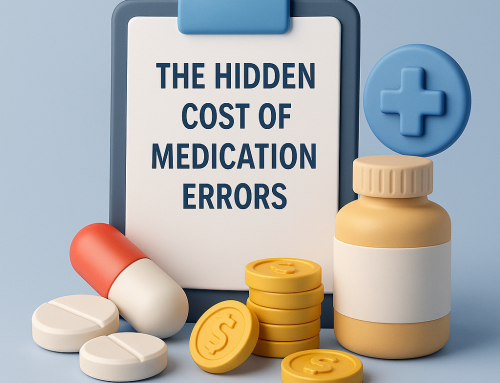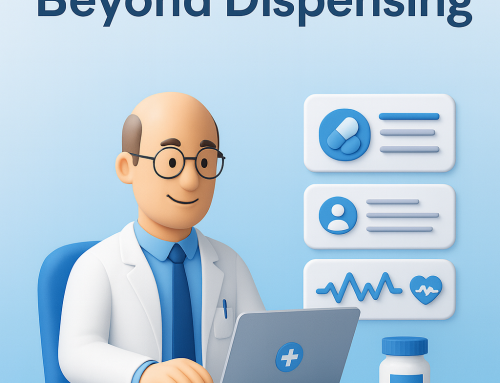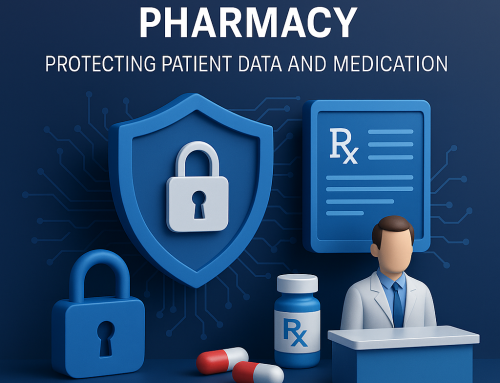Long-term health care facilities face mounting pressure to deliver quality patient care seamlessly while managing complex operational demands. The introduction of technology has made this goal easier, but it’s not the only important key to creating a successful long-term facility.
That’s where interoperability becomes crucial. It’s about transforming long-term care facilities into integrated systems.
Interoperability is the foundation that enables healthcare facilities to communicate, share data, and function as a unified ecosystem. For long-term care facilities, this connectivity can make the difference between fragmented care and truly connected and coordinated patient management.
What Interoperability Means for Long-Term Care
Interoperability is the ability of different healthcare systems, devices, and software to work together seamlessly. Long-term care includes medical management systems that can communicate with Electronic Health Records (EHRs), which connect to electronic Medication Administration Records (eMAR), which integrate with pharmacy systems, all while maintaining data integrity and security.
When systems talk to each other, healthcare professionals don’t spend as much time on administrative tasks, leaving more time open for what matters most: patient care. By integrating interoperability, connectivity eliminates frustrating silos that often plague healthcare facilities.

Game-Changing Benefits of Interoperability
Interoperability is much more beneficial than just offering a central system. It creates an arena for health organization. The better a healthcare facility can communicate, the faster it can handle crises.
- Enhanced Patient Safety Through Unified Data
Long-term care is highly dependent on patient safety, and interoperability serves as a critical safety net. When medication management systems integrate with patient health records, they comprehensively view a resident’s medical history, current medications, allergies, and potential drug responses.
Creating a unified system dramatically reduces the risk of medical errors. Instead of manually cross-referencing multiple systems, integrated platforms automatically flag potential conflicts. Creating a system of interoperability ensures that every medical decision is informed by complete, up-to-date patient data.
- Streamlined Workflows and Reduced Administrative Burden
Administrative tasks often consume countless hours in long-term care facilities. Interoperable systems eliminate redundant data entry, reduce paperwork, and automate routine processes. Medication administered and recorded in one system is automatically updated across all connected platforms.
Overall, increased and seamless data flow means nurses spend less time on documentation and more time on patient care. This usually results in increased staff and patient satisfaction and better resource allocation throughout the facility.
- Real Time Visibility and Decision Making
Interoperability gives long-term facilities visibility into operations. Administrators can access comprehensive dashboards that show medication compliance rates, inventory levels, and patient outcomes, all from a single interface.
This real-time insight ensures decision-making is easy. Instead of reacting to problems after they occur, facilities can identify trends, anticipate needs, and implement preventive measures before they impact patients.
- Improved Regulatory Compliance and Audit Readiness
Most long-term care facilities have stringent regulatory requirements. Maintaining compliance can be complex when data is scattered across multiple systems. But, with interoperable systems, it’s easy to track audit trails and every action from medication dispensing to access logs.
When required, facilities can quickly generate reports, demonstrate adherence to regulations, and maintain detailed documentation often required by regulatory bodies.
Pharmaceutical Revolution in Long-Term Care
The advent of new technology has made it easier to help patients who require long-term health care. Advancements in technology are only gaining speed, making it easier for AI to work hand in hand with healthcare professionals.
- Seamless Pharmacy to Facility Integration
The pharmaceutical supply chain has a history of fragmentation, often paired with multiple handoffs between pharmacy systems, delivery protocols, and facility management. Interoperable systems create direct communication channels between long-term care facilities and their pharmacy partners. Over time, they enable real-time prescription processing, automated refill requests, and instant notification of medication changes.
This integration allows pharmacies to access resident medical profiles directly. Direct access to the system reduces transcription errors and ultimately ensures complex medication regimens are prepared accurately. When a physician modifies a prescription, the change moves from the facility system to the pharmacy, eliminating delays.
- Advanced Medication Reconciliation
Medication reconciliation becomes infinitely more effective when systems can share comprehensive pharmaceutical data. Interoperable systems maintain complete medication histories that follow residents through care transitions, whether moving between units, returning from hospital stays, or transferring between facilities.
Under proper pharmaceutical continuity, complex drug interactions, dosing adjustments, and therapeutic goals are identified across all care settings. Everything remains consistent regardless of which care is provided.
- Real Time Drug Interaction and Allergy Monitoring
Modern interoperable systems continually monitor pharmaceutical combinations in real time. These platforms automatically scan for potential drug interactions, contradictions, allergy conflicts, and more. The ongoing surveillance extends beyond individual prescriptions to over-the-counter medications, supplements, and even dietary factors that might affect medication efficacy.
Interoperability also increases pharmaceutical databases’ ability to maintain a high level of safety monitoring. Every medication decision is informed by the most current pharmaceutical knowledge.
- Automated Pharmaceutical Compliance Management
Because regulatory compliance and pharmaceutical management require meticulous documentation and adherence to complex protocols, interoperable systems reduce the headache of auditing. It can automatically generate detailed pharmaceutical records, including chain of custody documentation, temperature monitoring for sensitive medications, and precise administration timing records.
This significantly reduces the impact on administrators and nursing staff while ensuring the facilities maintain the comprehensive pharmaceutical documentation they need by state and federal regulations.
- Pharmaceutical Data Analytics and Optimization
Interoperable systems create a system to optimize pharmaceutical data and medication management. Modern tech can analyze medication usage patterns, administration timing, and clinical outcomes. Facilities can then identify opportunities to improve pharmaceutical protocols and enhance resident care in real time.
Over time, efficiencies within interoperable systems reduce medication waste, improve inventory levels, and identify trends that might indicate the need for protocol adjustments or additional clinical interventions.
Overcoming Implementation Challenges
New technology is seldom simple. However, implementing procedures and systems with modern technology usually means this process only needs to happen once. For those looking for solutions to implementation challenges, here is a list of ways to improve the process.
- Planning for Seamless Integration
The first step is choosing systems designed for interoperability from the ground up rather than forcing incompatible technologies to work together. Facilities should assess their current technology stack, identify integration points, and develop a phased implementation strategy that makes it easy for staff to cooperate without disrupting daily operations.
- Improving Staff Training and Change Management
Comprehensive training doesn’t have to focus on technical skills, but rather on helping staff understand how interoperability pairs well with their daily workflows and patient care. Staff members should understand how interconnected systems work and how to leverage their integrated capabilities effectively.
- Ensuring Data Security and Privacy
Long term health care facilities should aim for highly connected and highly secure patient data. New policies should be put in place to bulk up robust authentication protocols, encrypted communications, and comprehensive access controls.
The Future of Connected Long-Term Care
As healthcare technology continues to evolve, interoperability will become even more critical. Now more than ever, healthcare professionals need to ensure the safety of their patients while making their jobs easier.
Finding a path to interoperability shouldn’t be overwhelming. Start by identifying your facility’s most critical needs and pain points. Are medication errors a concern? Are regulatory compliance requirements becoming more complex? Is inventory management consuming too much staff time?
Find time to focus on what really matters: the patients. Everything else should support that worthy goal.
Phoenix LTC’s medication management solutions are designed with HL7 interface capabilities and seamless integration at their core, ensuring your systems work together harmoniously. Our configurable carts, automated platforms, and web-based portals provide the interoperable foundation your facility needs to thrive in today’s connected healthcare environment.







